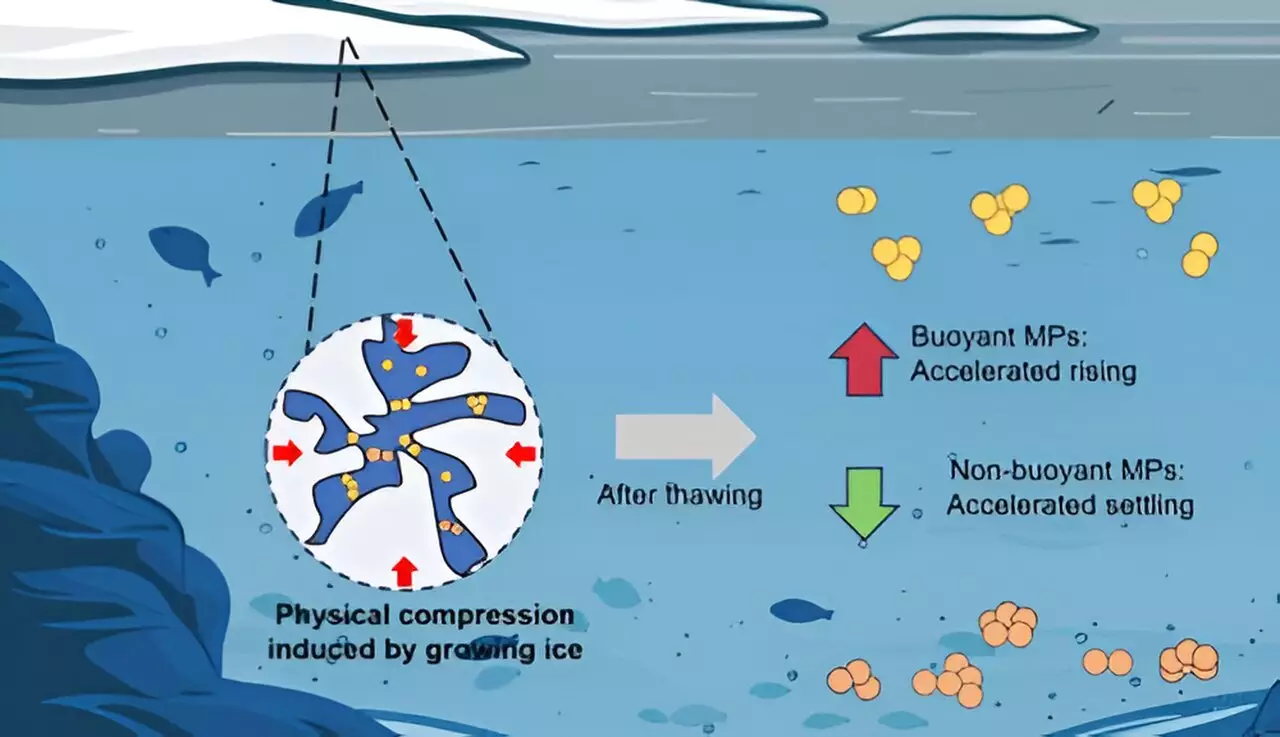As the world becomes increasingly aware of plastic pollution, the implications of microplastics in aquatic ecosystems have garnered significant attention. However, a recent study published in *Environmental Science & Technology* has shed light on an often-overlooked component of this pressing issue: the behavior of microplastics in frozen water and how their properties change upon thawing. This article will delve into the intricacies of this research, exploring the methods, findings, and broader environmental ramifications.
The Transformation of Microplastics During Freezing and Thawing
When bodies of water freeze, they encapsulate minute plastic particles, which are prevalent in our ecosystems. At lower temperatures, the microplastics become largely dormant, merely floating or settling depending on their density and the characteristics of the water. The study conducted by Chunjiang An and his colleagues sought to understand how the freezing process affects these microplastics, specifically focusing on three common polymers: polyethylene (PE), polyurethane (PU), and polytetrafluoroethylene (PTFE).
The researchers hypothesized that freezing could alter the physical characteristics of these microplastics, influencing their buoyancy and behavior when the ice melts. Through laboratory experiments, the team observed particles of these polymers submerged in freshwater and varying salinity levels. The findings illustrated that after a freezing period of just 24 hours, the sizes of these particles increased significantly upon thawing. This presented a notable change, particularly in PE, which showed a 46% increase in size compared to a mere 9% increase for PU.
The influence of environmental conditions, particularly salinity, also emerged as a critical factor in this study. While the microplastics’ particle sizes increased in freshwater, this phenomenon diminished in saltwater. The researchers attributed this to the unique structures formed within ice—the presence of brine channels that allow trapped particles to move freely without merging into larger aggregates. This insight opens up new avenues for understanding how microplastics can behave differently in distinct aquatic environments, emphasizing the need for a nuanced approach to plastic pollution research.
Furthermore, buoyancy dynamics proved pivotal in the study’s findings. Calculations surrounding gravitational, buoyant, and drag forces indicated that the microplastics would rise or sink faster after the freeze-thaw cycle. The study revealed that PE particles, known for their buoyant nature, were likely to ascend more rapidly, while denser particles like PTFE and PU settled at the bottom more quickly. This has crucial implications for sediment accumulation in lakes and rivers, raising concerns about the environmental impact of these materials as they enter the food chain through benthic organisms.
The ramifications of these findings are significant. As climate change continues to affect global temperatures, the frequency and duration of ice cover on water bodies will fluctuate. This could lead to an increased mobilization of microplastics during thawing periods, posing heightened risks to aquatic ecosystems where these particles can accumulate. The researchers highlighted that while their study used an accelerated freezing period, real-world conditions can last for months or even years, making this an urgent area for further investigation.
Researchers argue that understanding how microplastics behave in frozen conditions is vital for developing effective strategies for managing plastic pollution. It raises critical questions about existing cleanup measures and regulatory frameworks, indicating that our understanding of plastic pollution must evolve to consider seasonal changes and environmental quirks.
Chunjiang An and his team’s research adds a crucial layer to our understanding of microplastic pollution. By illustrating how freezing and thawing can transform the physical properties and behaviors of microplastics, this study emphasizes the need for comprehensive research that considers the interactions between temperature, environmental conditions, and human-induced pollution. As we confront the ever-growing challenge of plastic waste, recognizing the complex dynamics at play in aquatic ecosystems will be key to fostering a healthier planet for generations to come.


Leave a Reply